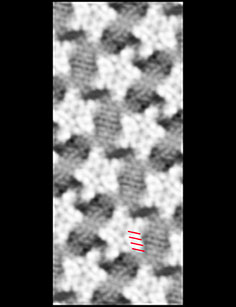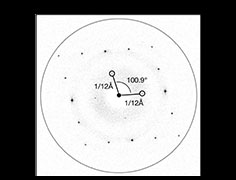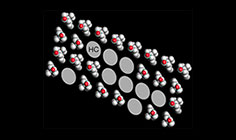Cell membrane
Cell membranes are fundamental components of all living organisms, and intense efforts have been made to understand how the constituent proteins and lipids build their complex bilayer structures. However, the inherent mobility and wide-ranging heterogeneity of the lipids have limited our ability to understand cell-membrane structure at a molecular level. Consequently, little is yet known about the protein-lipid and lipid-lipid interplay that exists in situ.
Away from the protein surfaces, the lipid bilayer is generally assumed to be fluid. But this is not always the case, as highlighted by single class-averaged structures obtained from the ACh receptor tubes. In these structures, the lipids in one of the leaflets form an ordered 'skin' comprised of the sterol groups of cholesterol and the initial saturated portions of the phospholipid hydrocarbon chains. The ordered motifs appear because the cholesterol concentration in this leaflet exceeds saturating amounts (~50 mol %). No longer stable in the fluid hydrocarbon setting, the monomer self-assembles - creating linear arrays, like those building crystalline monolayers at the air-water interface.
Key publication:
Unwin, N. Structure of a cholinergic cell membrane. Proc. Natl. Acad. Sci. USA 119, e2207641119 (2022). (pdf)



